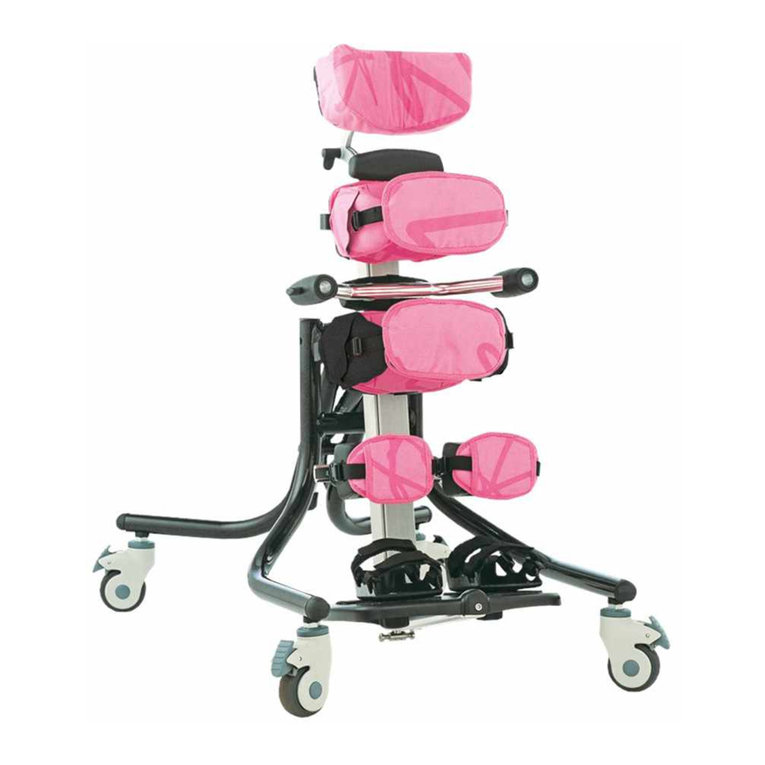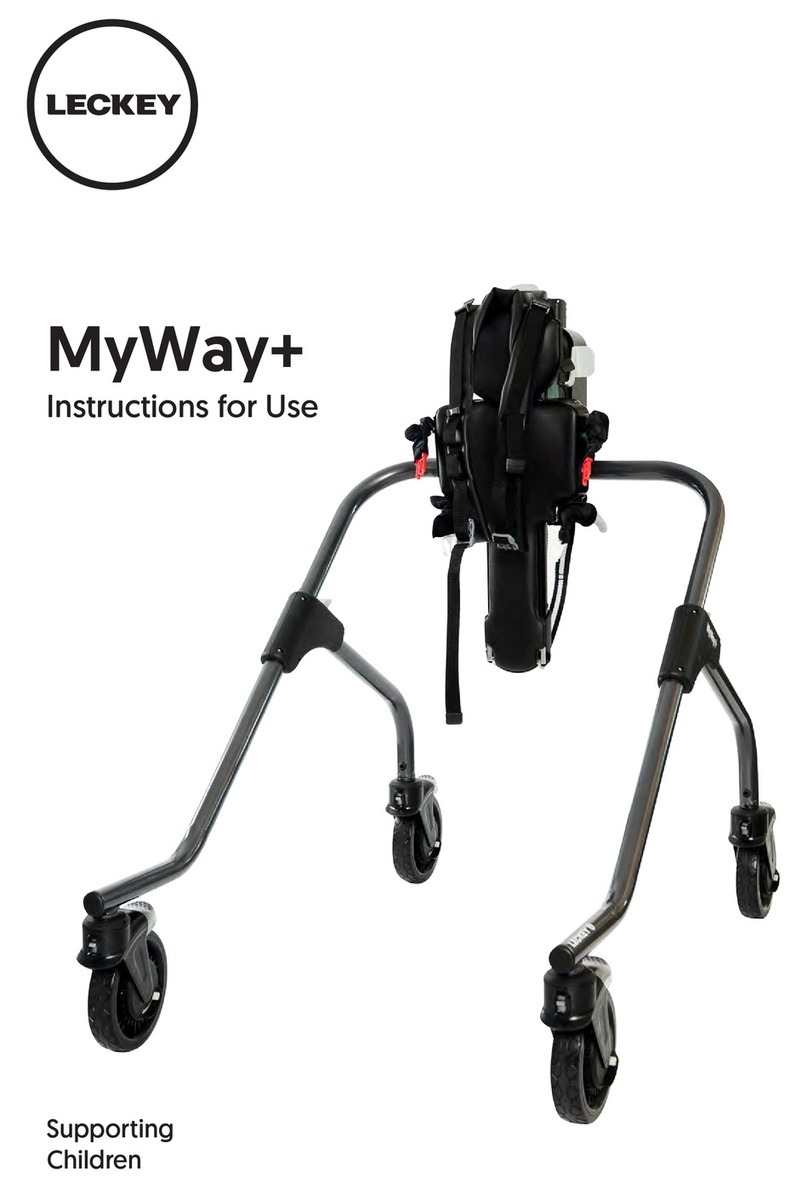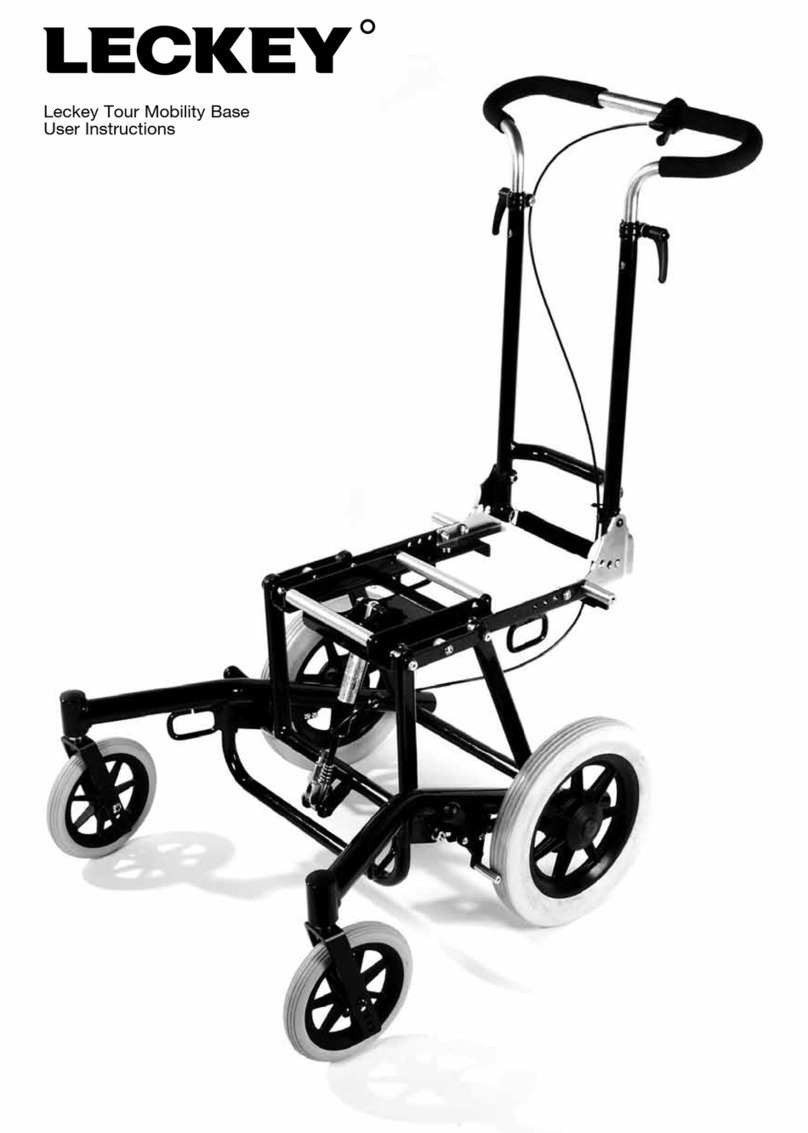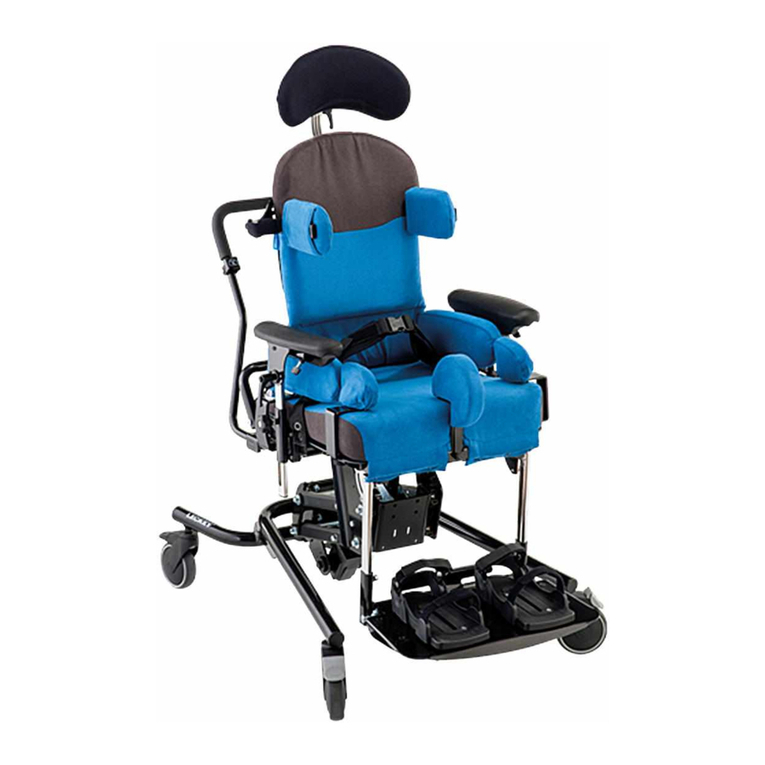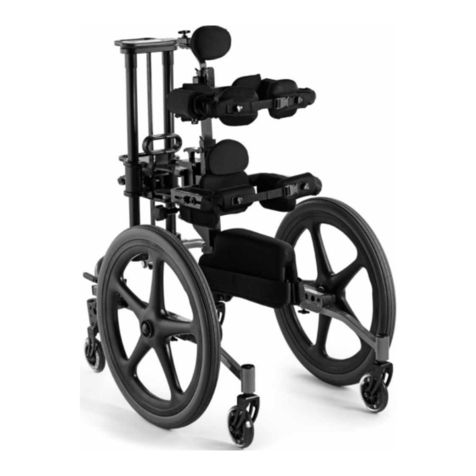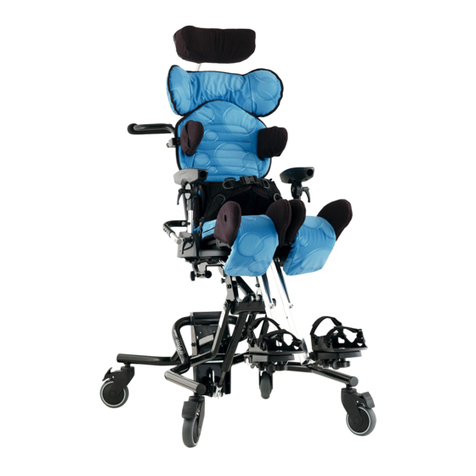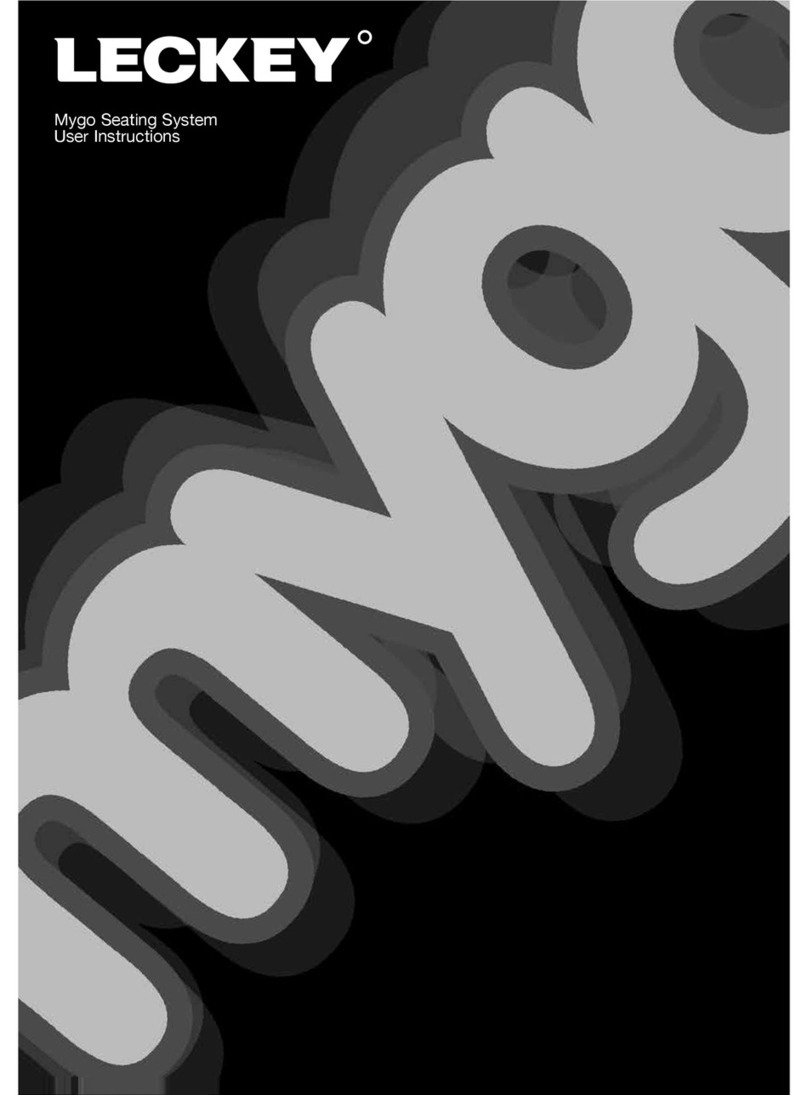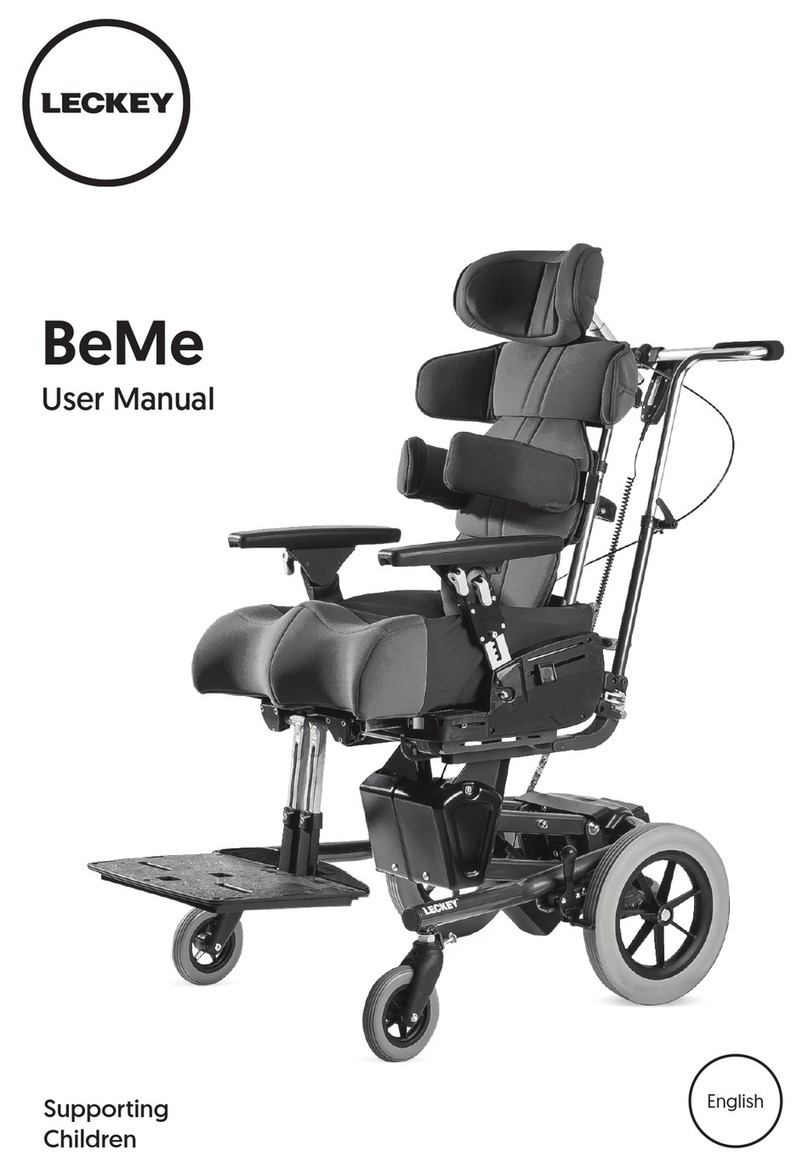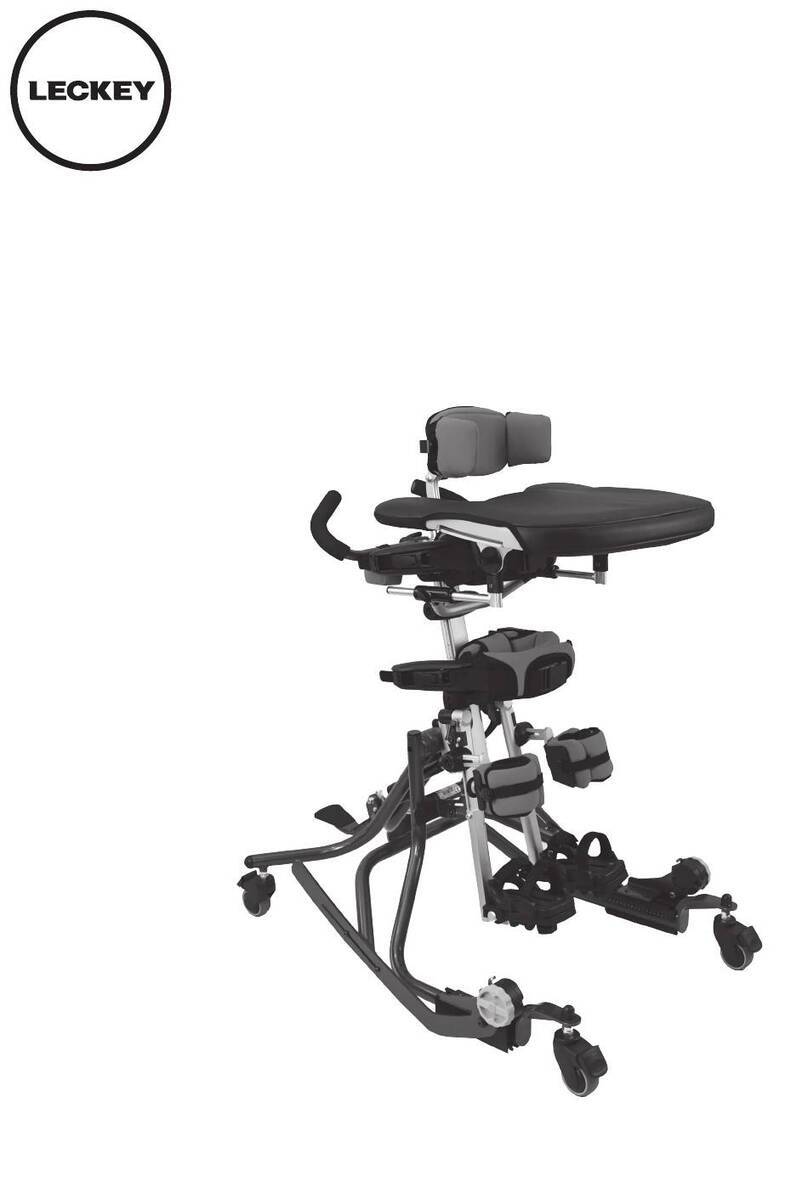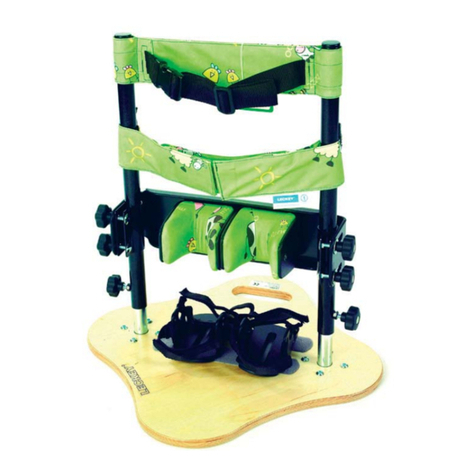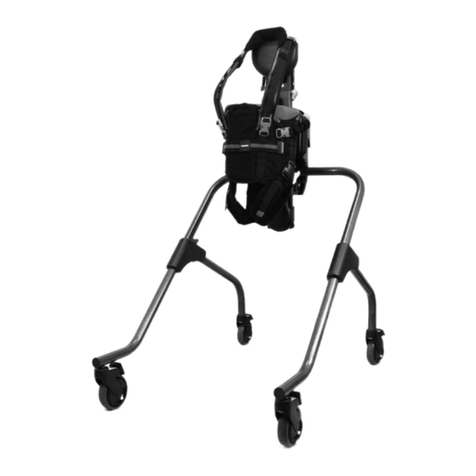
1. Always read instructions fully
before use.
2. Users should not be left unattended at
any time whilst using Leckey equipment.
3. Only use Leckey approved components
with your product. Never modify the
product in any way. Failure to follow
instructions may put the user or carer
at risk and will invalidate the warranty
on the product.
4. If in any doubt to the continued safe
use of your product or if any parts
should fail, please cease using the
product and contact our customer
services department or local dealer
as soon as possible.
5. We would recommend that users are
never transferred straight from seating
to standing without preparation and
stretching. This is best done whilst lying
on a mat but can be carried out in a
wheelchair or seating system if required.
6. Carry out all positional adjustments and
ensure that they are securely fastened
before you put the user into this product.
7. When placing the user into a standing
frame, for safety reasons, always secure
the pelvic band first. The chest and knee
straps should then be fastened.
8. When the product is stationary ensure
that all castors are locked and facing
away from the base as this will improve
product stability.
9.Never adjust the overall height of the
Freestander while the frame is in use.
Other finer positional adjustments may
be carried out safely when the user is
in the frame.
10. Never leave the product on a
sloping surface, greater than 5 degrees.
Always remember to lock all the castors.
11. The product contains components
which could present a choking hazard to
small children. Always check that locking
knobs and bolts within the child’s reach
are tightened and secure at all times.
12. Leckey products comply with fire
safety regulations in accordance with
EN12182. However the product contains
plastic components and therefore should
be kept away from all direct sources
of heat including naked flames,
cigarettes, electric and gas heaters.
13. Do not place hot items on the tray
greater than 40 degrees.
6 Safety information
